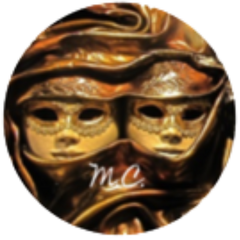Arts and Alzheimer’s: It’s Not Just About Visual Art - A Caregiver’s Guide
The arts are an alternative way of connecting and communicating with those we know and love with Alzheimer's or Dementia. Various art forms can be applied as useful tools to encourage social engagement, stimulation and mobility, as well as acknowledge the dignity of those we care for through self-expression.
Unfortunately, when people hear the terms art or arts, they often think only of visual art: painting, drawing, sculpture and other visual forms. Art includes more than just visual creations. The term art includes music, movement, poetry, storytelling, writing, and mixed media, art forms we can use to engage those with memory loss.
As a pioneer and professional master teaching artist for many years, specializing in the arts with those with Alzheimer's or Dementia, well, frail older adults and those with special needs, when suggesting my arts program to a care facility or community organization, I was usually asked to explain the painting activities I had in mind. This was at a time when arts programming with any kind of older adult wasn’t, for the most part, an interest or priority of institutions or organizations as a means of enhancing quality of life for this population.
Unfortunately, the term - the arts - is often misunderstood.
Consider music for arts engagement, whether song, instrumental compositions, and music appreciation, where listening, moving, and clapping to a beat is a stimulating yet relaxing way to reach those when words cannot.
Movement inspired by music, even while sitting in a chair, can be a joyous experience in a circle with others, holding hands and swaying, one-on-one, or even as a singular activity. Music is embedded in our mind and memory. Although those memories may not be realized, the feelings that music brings are often apparent in the faces and voices with whom we share this art form.
If your loved one played an instrument, bring it the next time you are with them. Place it in his/her hands and see what happens. Muscle and music memory remains deep within us. The ability to reawaken the music of our lives can be as surprising as it is gratifying.
Other forms of art which anyone can provide for arts engagement are poetry and storytelling. Bring your or your loved one’s favorite poem or short story when you visit them and recite or read it when you are together.
Did your loved one enjoy reading poems or stories? Just a line or two from a famous or favorite poem from that person’s youth can prompt spoken lines from that work of literature. Tell happy family stories and see what happens without starting with, Do you remember? Of course, no need to correct a response that is not true to the history of the experience. What matters is that your words may bring forth conversation, whether based in fact or not.
I always let a person I’m working with take the lead once the art experience gets going. As for storytelling inspired by images in a photography book, old family photos or your loved one’s very own paintings or drawings, you can also make up a story using positive images as a way to start connection and conversation.
It doesn’t matter if your loved one responds with only a word or two, or even if the words don’t seem to make sense to you. It is the sharing of this experience that provides stimulation and perhaps glimpses of memory.
Even without acknowledgment of meaning, spoken word has rhythm and cadence that can stimulate reaction in return.

